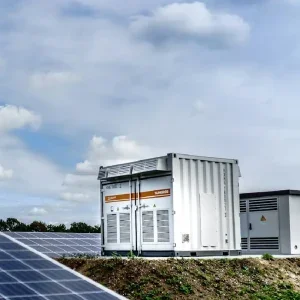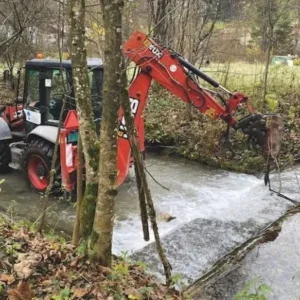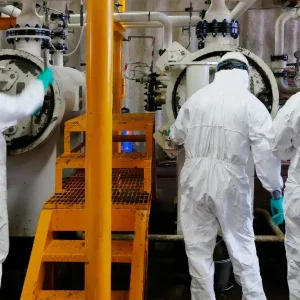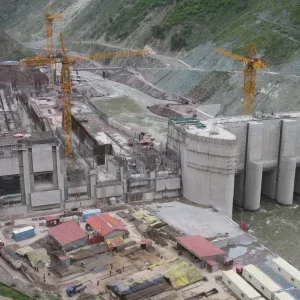
Inspection, maintenance and repair (IMR) is an integral element of life of field (LOF) projects, and encompasses multiple disciplines, from offloading production reserves to riser integrity and seabed settlement monitoring. One of the most critical is pipeline inspection, which remains an operational imperative for upstream oil and gas operators, particularly in remote, ultra-deep-water locations.
Rapid advancements in remotely operated vehicle (ROV) technology are helping upstream operators to monitor and maintain new and ageing infrastructure, maximise recovery rates, and mitigate the risk posed to subsea personnel during complex pipeline inspection projects at depths up to 3,000m.
"The main benefit of ROVs is that they avoid having people in the water during subsea operations," explains Moray Melhuish, commercial director at rapid-response ROV company ROVOP. "In addition, ROVs are capable of operating in depths and at currents beyond the capability of divers.
"Our work-class systems are typically rated to 3,000m, over ten times the depth suitable for diving, while our Panther XT Plus systems are capable of travelling at 4kt. In terms of cost savings, a ROV system can be mobilised for far less than a dive spread and operated from a greater range of vessels," he adds.
Categories of ROV
Originally developed in the 1960s by the US military, ROVs have evolved rapidly in the intervening years, and are now an indispensible facet of oil and gas exploration and production (E&P) projects.
Ergonomically controlled and powered from the surface by an operator or pilot via an umbilical or remote control, modern ROV systems feature an array of automatic pilot functions built in, including auto heading, auto pitch, station keep (or dynamic positioning) through the entire water column and auto track, which can be invaluable for pipeline or cable surveys. The latest ROVs also have built-in advanced diagnostics that automatically inform the pilot which system and sub-system is affected, dramatically speeding up the time it takes to pinpoint and repair a failure.
The majority of offshore ROVs fall into two categories: work-class and heavy-work class vehicles. The former are powered electrically and hydraulically. Typically fitted with innovations such as a seven-function manipulator and a five-function grabber, this class of ROV is deployed in the drilling and construction support sector, as well as in the field of subsea pipeline inspection and monitoring.
The heavy work class vehicle is the most advanced version of ROV. Designed for waters measuring up to 3,000m deep, it boasts superior horsepower and lift capabilities as well as manipulators and grabbers capable of performing subsea tie-ins and deepwater installations.
The Autonomous Inspection Vehicle (AIV)
Described as game-changing technology, the Autonomous Inspection Vehicle (AIV) developed by subsea engineering and construction specialist Subsea 7 augments its work-class remotely operated vehicle (WROV) and observation-class remotely operated vehicle (ObsROV) inspection.
Fitted with a dedicated launch and recovery system and winch, the AIV is able to hover, allowing it to carry out close approach and detailed inspections of pipeline infrastructure at depths of up to 3,000m. It can be deployed from a vessel and work in tandem with a WROV carrying out IRM tasks, or permanently based on a floating production storage and offloading (FPSO) installation.
The AIV is deployed from its own basket station on the ocean floor, meaning all the power resources can be dedicated to inspection missions of up to a single day at a speed of up to two knots, and not wasted on a dive and recovery process. In addition, complex missions can be programmed through a topside control system that plugs into the AIV on deck, allowing for full inspection sequencing.
"The system is programmed to recognise, through its sensors, specific subsea infrastructure configurations," says Subsea 7’s Asia vice-president Dick Martin. "By comparing what it sees to its world model, the vehicle knows where it is and will then complete its mission accordingly."
The deck control system also undertakes system diagnostics managed by onshore control centres. The AIV system can be maintained and operated by a small crew of technicians and data processing takes place onshore in near real time. The AIV is even capable of dealing with emergency scenarios. De-risking of the autonomous nature of the system includes building numerous control behaviours to account for any system anomalies or emergency situations.
The vehicle is programmed to return to its basket if the AIV believes there are any anomalies that will compromise the mission. In an emergency situation, depending on the deployment mode, the vehicle will either sink to the seabed or release buoyancy and float to the surface.
Depth of knowledge
Another operator working at the leading edge of ROV inspection is the US company Oceaneering, which deploys an extensive portfolio of ROV vessels and associated technologies around the world.
The flagship of its fleet is the Millennium work-class ROV. Rated to 3,600m water depth, the system employs microprocessor-based telemetry to minimise maintenance, decrease set up time, simplify troubleshooting and provide automatic control functions. Fibre-optics are the primary transmission link for all video and data signals between the vehicle and the surface control console, which enables extremely high-quality video transmission, and plug and play installation of sensors and equipment.
Oceaneering ROVs are fitted with a range of innovations designed to make subsea IMR tasks as safe and simple as possible. The company has the most HD video cameras installed on work class ROVs in the world. Configured for 3D video, 2D video or both, they provide clear, real time images to pilots.
In addition, the company’s Atlas Hybrid Manipulator arm provides extremely fine control to the operator and LED lighting technology is rated to 4,000m water depth. Specifically designed for ROV usage, the system’s durable design provides maximum brightness immediately after activation.
Many of these technologies were employed during a three-month IMR operation in Australia. Tasked with inspecting a supposedly ‘unpiggable’ pipeline, the company’s Asset Integrity team employed Neptune, a proprietary ROV-deployed ultrasonic inspection system that clamps around a pipeline without interrupting production and delivers high-resolution wall-thickness mapping.
Extreme pipeline temperatures necessitated a diverless solution, and by converting an off-the-shelf diver installed clamp to an ROV-installable one, the fabrication cycle was reduced to seven weeks.
Training ROV pilots
Innovation in the field of ROVs isn’t just limited to technology – training institutions are also pushing the boundaries in order to ensure that the next generation of ROV pilots can perform at their peak in ultra-deep water and successfully adapt to rapidly evolving systems.
"When you talk about really deep water, beyond 200-250m, then that precludes diving altogether," says Steve Ham, general manager of the Underwater Centre, which operates specialist training courses for commercial ROV pilots. "As a result, the demand for ROV training – and the demand from ROV companies for more advanced skills – has increased over the last few years. There is definitely a looming skills deficiency there.
"In the past we only had small observation-class ROVs to train in. Now, thanks to collaboration with the industry, we employ a substantial Tritan XL work-class ROV vessel converted from a car ferry, which offers a very different kind of capability. We’ve built in ROV workshops as well, with the aim of making the training as realistic and lifelike as possible, therefore delivering a contextual experience environment.
"As a result, the candidates that graduate from the course will be much more prepared to enter the industry, and be more effective contributers at an early stage in their career. Our first course started in June and represents a massive increase in the level of ROV training now available to the offshore industry."
The rapid evolution of ROV technology is forcing the major industry players to remain at the top of their game. Once considered to be the very outer limit of what was possible, ROV vessels capable of operating at a depth of 3,000m are now relatively commonplace.
In June, the small Australian firm Total Marine Technology announced that two of its ROVs passed deepwater acceptance tests to 3,000m in the North Atlantic Ocean. The Typhoon MK2 ROVs are destined for Brazil as part of a five-year contract with the Brazilian energy giant Petrobras.
"The main challenge to ROV contractors is to ensure that their veteran systems continue to be reliable, and are capable of deploying the latest generation of hydraulic tooling and advanced survey equipment," commented ROVOP’s Moray Melhuish. "ROV systems, like any technology product, are evolving at a fast pace."






